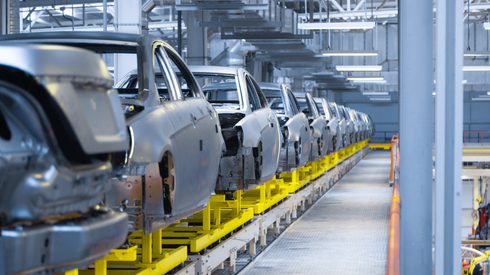Exxon Mobil Corp plans to produce either battery-grade lithium carbonate or hydroxide from its new direct-lithium extraction (DLE) project in the Smackover Formation in southern Arkansas, depending on customer requirements for lithium iron phosphate (LFP) or nickel cobalt manganese (NCM) batteries, according to the company’s lithium global business manager.
“At the start of the [DLE] process, you’ve then got multiple choices: You can take it through to carbonate or you can take it through to hydroxide. We’re going to be driven by market decisions and customer discussions that we have,” Patrick Howarth said in an interview with Fastmarkets at the Arkansas Lithium Innovation Summit in Little Rock, Arkansas, last week. “We’ve had a wide variety of input from the customers that we’ve spoken to – and we’ve spoken to a huge number – and I would say that there’s lots that are focused on LFP and there’s lots that are focused on the various flavors of NMC.”
LFP batteries – known for their stable, safe performance and cost-effectiveness despite their relatively lower energy density – are expected to take the largest market share in the next 10 years, followed by NCM batteries, according to Fastmarkets’ research. However, NCM will remain a key market, because original equipment manufacturers (OEMs) in the US and Europe are still interested in NCM as the answer to range anxiety.
Either way, “the facility will get to battery-grade [production], whether its carbonate or hydroxide,” Howarth said, though he declined to clarify exactly how many tonnes of lithium will be produced from the project.
To give a sense of scale, lithium from the site will power 1 million electric vehicles (EVs), but “what you should read into that is its multi-project potential,” according to Howarth.
“Depending on the assumptions of pack size and lithium content within the battery, you can have various different outcomes, but it’s multi-project potential,” he said.
ExxonMobil is evaluating different DLE technologies for its brine processing.
“Today in the market, there’s enough supply choice to enable us to get to market quicker,” Howarth said, as opposed to ExxonMobil developing its own in-house DLE technology.
However, the company does not plan to announce a DLE vendor “anytime soon,” he added.
New Mobil Lithium entity
ExxonMobil will offer its new production – set to begin in 2027 – under the brand name Mobil Lithium, building on its “rich history of deep technical partnership between Mobil and the automotive industry,” according to its announcement of the project in November 2023. The company acquired the rights to 120,000 acres of the Smackover formation in early 2023 and plans to be a leading supplier for EVs by 2030.
“We’ve had some very senior-level conversations with many automakers, battery makers, etc., but we’re not going to be announcing that anytime soon,” Howarth said.
The company also is partnering on acreage with Tetra Technologies for another project in the Smackover Formation, he added.
The Inflation Reduction Act has been a key incentive to build out the North American battery value chain, according to Howarth.
“It’s definitely sparked a lot of conversations, and there’s a big pull for the projects that we’re trying to bring forward right now,” he said.
Based on ExxonMobil’s “upstream capabilities, chemicals capabilities and relationships with the automotive sector,” the company does not plan to try to vertically integrate further downstream by entering the cathode or battery manufacturing space, according to Howarth.
Although lithium prices have dropped over the past year, ExxonMobil’s time horizon is longer term.
“If you think about EV demand, there’ll be ups and downs,” Howarth said. “One of the great things that we’ve got is a balance sheet to enable us to invest in the cycle, so that we can hit those macro demand signals over time.”
Lithium prices
Spot prices for lithium carbonate in Europe and the US were unchanged in Fastmarkets’ most recent assessment, while those for lithium hydroxide in Europe and the US increased.
Fastmarkets’ weekly price assessment of lithium carbonate 99.5% Li2CO3 min, battery grade, spot price ddp Europe and US was $14-15 on Thursday February 22, flat since January 18.
Fastmarkets’ price assessment of lithium hydroxide monohydrate LiOH.H2O 56.5% LiOH min, battery grade, spot price ddp Europe and US was $13.50-15.00 per kg on Thursday, up from $13.50-14.50 per kg one week prior.
Fastmarkets has proposed to amend the specifications of its existing price assessments for Europe/US lithium spot battery-grade and technical-grade lithium hydroxide and carbonate to remove the US footprint and to launch weekly price assessments for spot battery-grade and technical-grade lithium hydroxide and carbonate for the US and Canada. Pending feedback, the proposed changes would take place beginning with the weekly assessment on Thursday April 4.
Keep up to date with the latest lithium prices, data and forecasts on our dedicated lithium price page.






